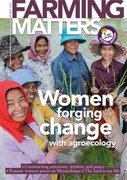Living on the edge: women, agrobiodiveristy, and livelihoods
V. Ramprasad, 2015. Green Foundation and Third World Network, India, 109 pages.
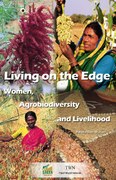
Our Stories, one journey: empowering rural women in Asia on food sovereignty
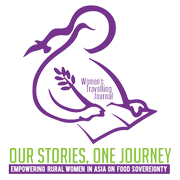
Every day, rural women in Asia face mounting challenges caused by an increasingly broken system of food and agriculture. High food prices, low income, land grabbing, climate change and decreasing control over seeds mark the experiences of women farmers who grow much of the region’s food. This book is a travelling journal and presents the experiences of eight rural women in the Philippines, Indonesia, China, Cambodia, India, Sri Lanka, Malaysia and Vietnam. The women describe their struggles against, for instance, land grabs from palm oil companies, but also hopeful initiatives in ecological agriculture. Expressions are not limited descriptive texts but also in drawing, poetry and songs. Their message is simple: help transform agriculture into a more equitable, fair and sustainable system!
Women redefining the experience of food insecurity: Life off the edge of the table
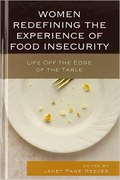
This book is about understanding the relationship between food insecurity and women’s agency. The contributors explore both the structural constraints that limit what and how much people eat, and the myriad of ways that women creatively and strategically re-structure their own fields of action in relation to food, demonstrating that the nature of food insecurity is multi-dimensional. The chapters portray how women develop strategies to make it possible to have food in the cupboard and on the table to be able to feed their families. Exploring these themes, this book offers a lens for thinking about a food system that incorporates women as agentive actors and links women’s everyday food-related activities with ideas about food justice, food sovereignty, and food citizenship. Taken together, the chapters provide a unique perspective on how we can think broadly about the issue of food insecurity in relation to gender, culture, inequality, poverty, and health disparity.
Women and food sovereignty: voices of rural women of the south
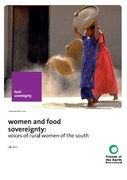
This document presents testimonies that reflect the situation of rural women in Latin America, Africa and Asia. The inequality faced by women is evident with respect to denial of basic rights, gender-based violence, economic discrimination and the negative impacts of agribusiness and extractive industries which disproportionally impact women. The testimonies also show alternative approaches to the agribusiness model. Many of the actions taken by women to fight for their rights are in fact traditional practices that they have recovered and sustained. The first thematic area includes an overview of the main issues facing women. The second includes testimonies that focus on the values and worldviews of rural women on agriculture, biodiversity and work. The third section highlights the struggles and resistance of women and the alternatives they implement to secure a more just world.
Promises, power and poverty: Corporate land deals and rural women in Africa

The rush to invest in farmland in Africa is having an immediate impact on women’s land-use options, their livelihoods, on food availability and the cost of living, and, ultimately, on women’s access to land for food production. These are only the economic impacts. Women’s knowledge, socio-cultural relationship with the land, and stewardship of nature are also under threat. Too often ignored, rural women’s voices and perspectives need to be heeded urgently if a robust rural economy and food for all are to be guaranteed.

